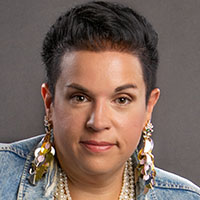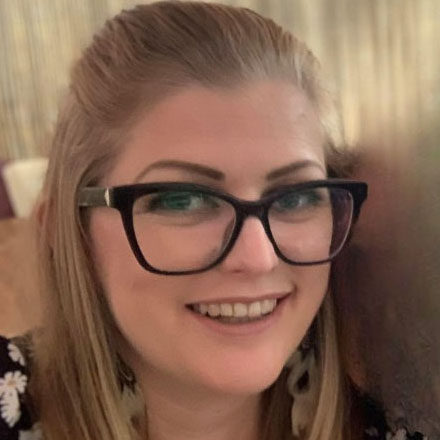One of my most prized possessions is a cracked plastic snow globe. Inside a Dalmatian puppy holds a Valentine which reads I'm Yours above the red plastic base printed with My Heart Belongs to You. When I gently shake the globe, red plastic hearts swirl in a tiny love blizzard. This puppy snow globe, cracked and low on water when I received it, is worthless to the world, but inestimably dear to me.
Years ago, my son's preschool teacher handed out tickets as a reward for good behaviors, such as 'being kind' and 'being a helper'. At the end of each week, the children could exchange their tickets for a treat from the Magic Toy Box, a collection of little plastic toys, stickers, candy, and knickknacks that never failed to motivate the class of 5-year-olds. That teacher understood kids.
In February, after a week of being kind and helpful, my son exchanged his good behavior tickets for the puppy snow globe. He sneaked it home in his backpack and gave it to me on Valentine's Day, his little face aglow with love and pride. The thought of my little boy being earnestly good and spending his tickets on a gift instead of a toy for himself is so wholesome it breaks my heart with love. To my mind, that cracked snow globe isn't just a symbol of love, it IS love, melded right into the plastic puppy and scattered hearts. The idea of anyone ever mistreating, or God forbid, throwing away the puppy snow globe is devastating, so I guess they'll have to bury it with me.
I found the emotional opposites of my snow globe last week, at the Museum of Broken Relationships in Zagreb, Croatia. The everyday objects on display there are like the items in the Magic Toy Box: just "stuff" to the casual observer, but powerfully imbued with meaning to their lovelorn donors. The intimate and anonymous stories beside each exhibit, translated into both English and Croatian, are where the transformations take place, turning a plastic bottle into a symbol of perfidy and a paperback diet book into an icon of betrayal. The museum respectfully displays these common objects like fine art, lighted under Plexiglas.
A Post-It note scrawled with the first line of a tender greeting was left unfinished when the slumbering lover woke up and daily goodbyes were shared in person. When the writer next returned to the Post-It, the relationship had shattered, leaving the sticky yellow square as an unhappy reminder of love offered and rejected.
A knitter fell in love with a man who requested a handmade sweater but could never decide what he wanted it to be. Turtleneck or cowl? Fair Isle or cabled? Left with skeins of gray yarn after their romance ended, the knitter crafted a Sweater of Indecision to represent her wishy-washy lover. A droopy mess of elongated, mismatched sleeves, one enormous misplaced pocket, and a threadbare back side of slipped stitches and holes, it's a hilarious symbol of the man's inability to know what he wanted either in a sweater or in love.
Some exhibits are heart-wrenching, like the gold charm bracelet donated by a woman whose father gave her the bracelet during a family trip to Walt Disney World, only to abandon his family and his adoring young daughter, shortly afterwards. Others are tragic, like the wedding dress donated by a bride whose fiance died at a bus stop during a random terrorist attack only days before their wedding.
After years of thwarted love, a man mailed a final postcard to his beloved in the fall of 1939 and was never heard from again. The woman whose parents forbid their marriage hid the postcard for decades, mourning her lover who is believed to have died in World War II.
A drawing of a man and a box of oil crayons on exhibit were among an elderly woman's possessions when she died, revealing to her family an unsuspected youthful romance that ended in heartbreak.
A broken stationary bike, once a gift from a doting husband to his wife, was transformed into a painful reminder of betrayal after he found out that the bike "wasn't the only thing she liked to ride."
Walking through the museum, I was struck by the universality of heartbreak, that regardless of how exquisitely painful and unique each exhibit was, the experience of loss is inevitable to the human condition. This is probably why, in the city of Zagreb which boasts more museums per capita than any other city on earth, the Museum of Broken Relationships turns up on every tourist list as a Must See. Unlike museums about different cultures, ancient peoples, and specific historical events, we're all intimately involved in the subject of this museum, because we're all in the human race club. If you haven't already paid your membership fee of one broken heart, you'll pay it eventually. This museum is about all of us.
Our shared experience of loss, crystallized in the everyday objects on display, was handled with respect and sympathy on the day I visited with my husband. Visitors moved quietly between exhibits, reading all the stories and speaking in hushed tones. Being confronted with all these leavings of brokenness made me feel sad, but also connected to the human race, to the other museum visitors, to past loves, and to the husband at my side. We went out to lunch afterwards and talked about the historic events in our own romance, how we met, our first tentative steps towards connection, and how grateful we were to be together. My engagement and wedding rings, assembled from rings and stones owned by my husband's mother, grandmother, and great-grandmother, are a powerful symbol of our relationship - not perfect, and not even entirely matching, but united, literally welded together into a whole.
And humans being resilient, some exhibits were sweet and even funny reminders that heartbreak isn't fatal. The last exhibit was a badly damaged garden gnome, which somehow "threw itself" into the car windshield of a betraying partner. My favorite exhibit was a plain white toaster dramatically titled The Toaster of Vindication, with a description that reads, "When I moved out, and across the country, I took the toaster. That'll show you. How are you going to toast anything now?"
If you would like to virtually post your exhibit of a broken relationship, you can go to the Museum of Broken Relationships online. The museum also accepts some physical donations. If you'd like to feel less alone during a breakup, you might want to visit there, or depending on your nature, you may prefer to avoid it entirely for now. If you want to let others know how to delight you with a symbol of their love, you'll want to check out Things to Get Me. And most importantly, kiss your dear ones and say those three magic words in gratitude for the whole relationships around you today.
 Julie
Julie


















